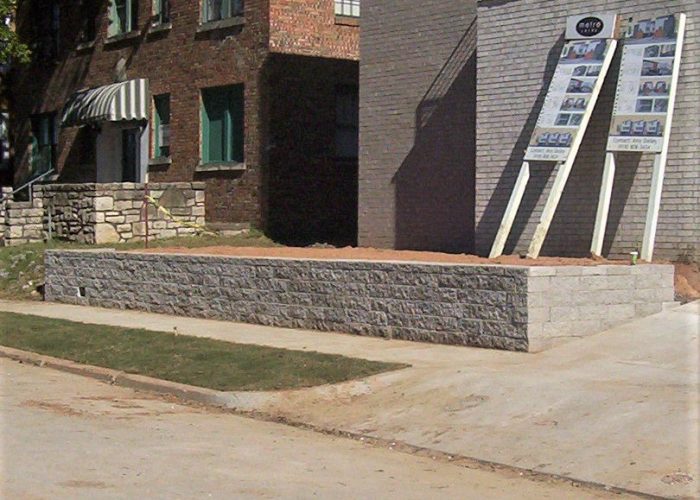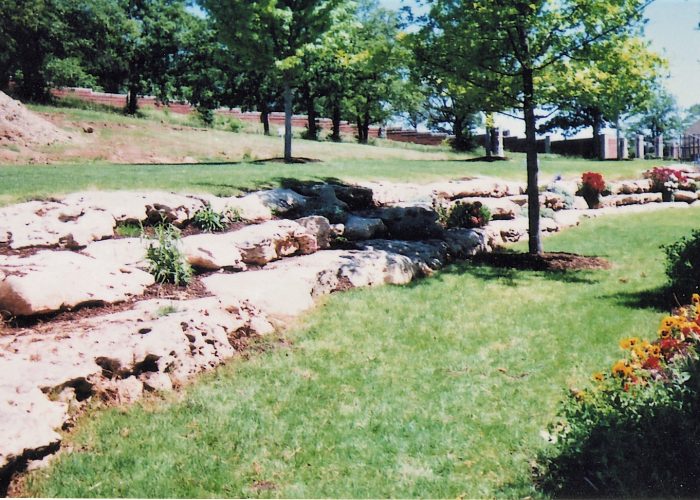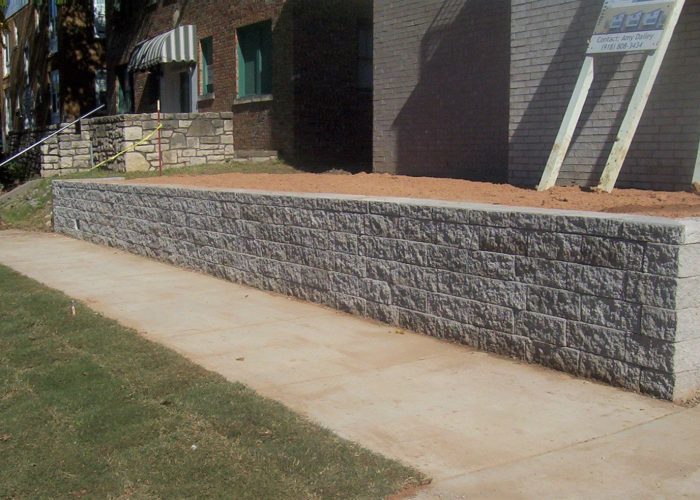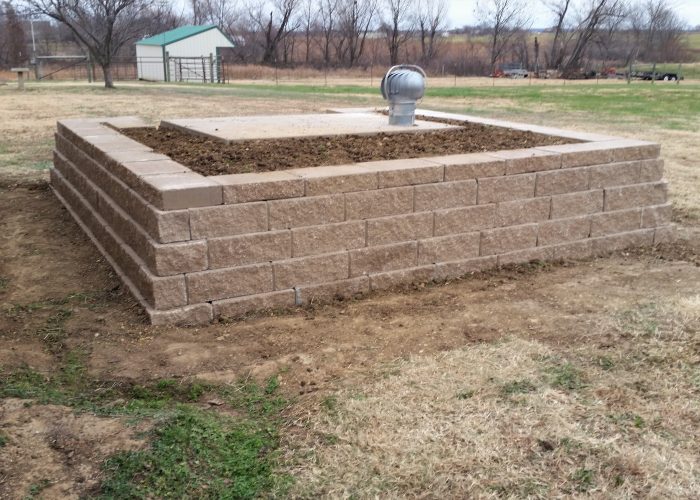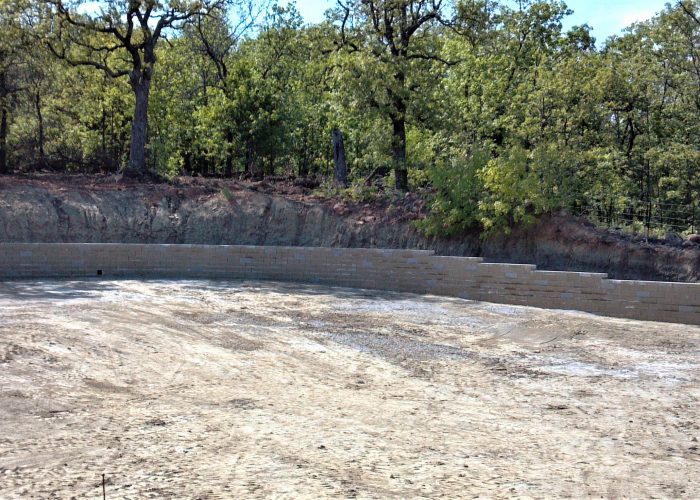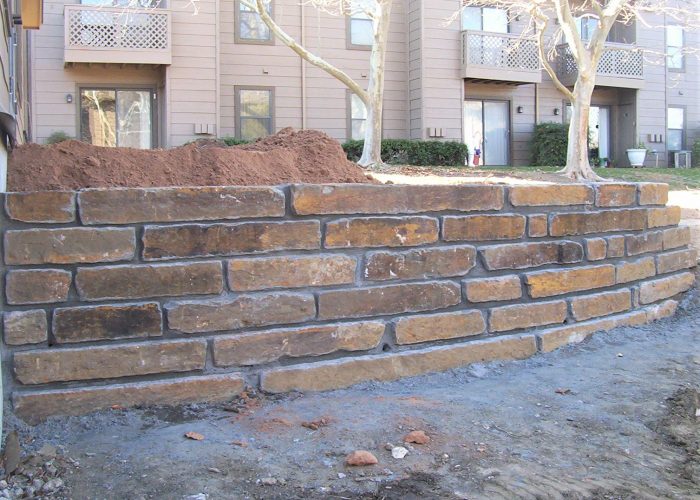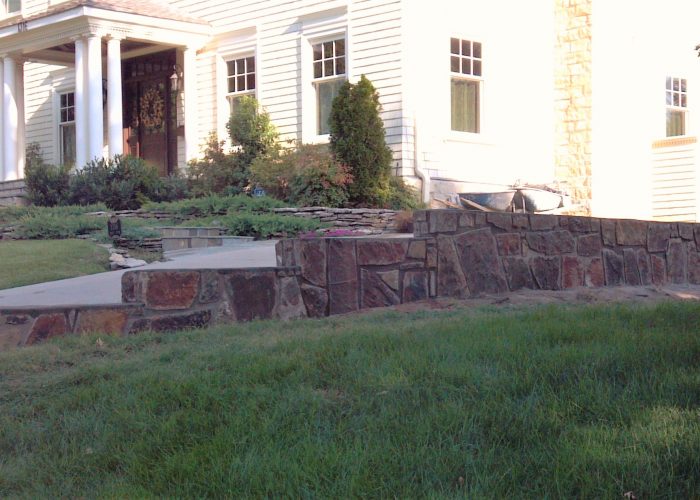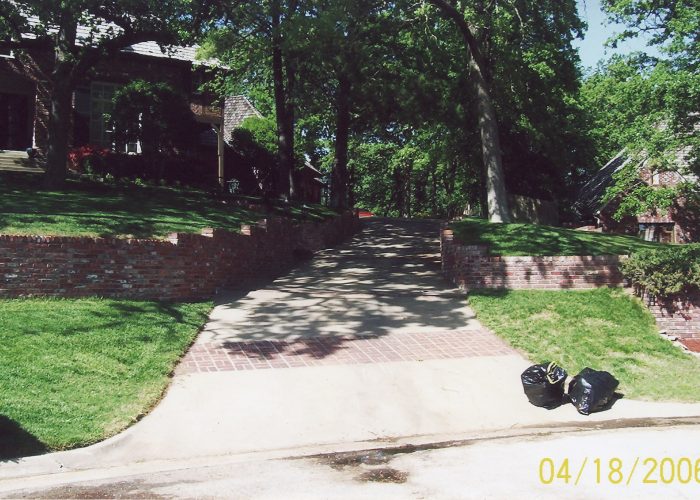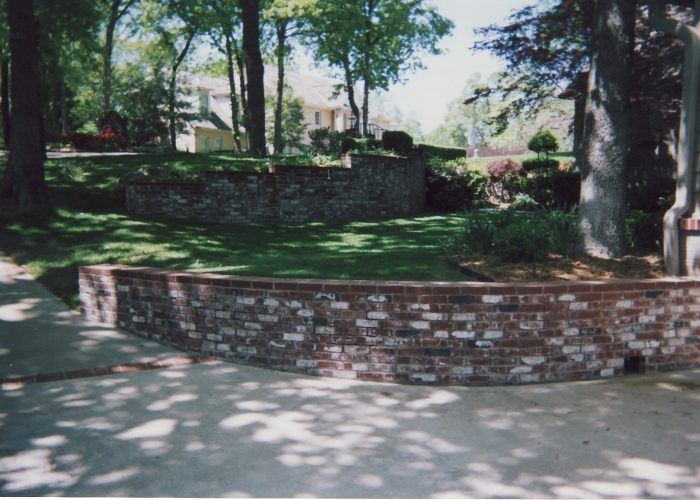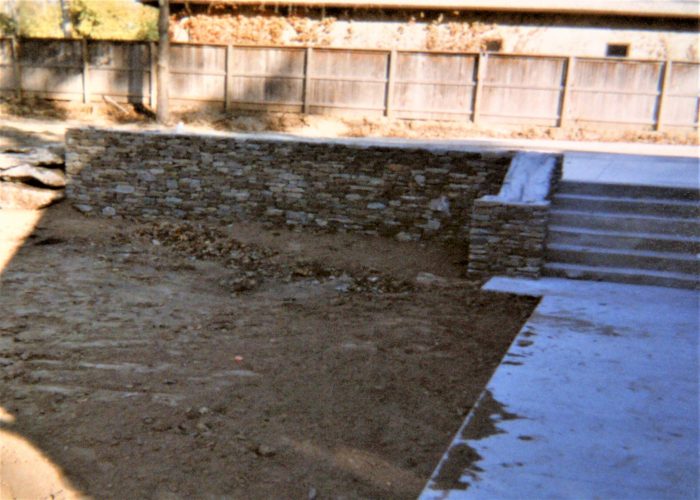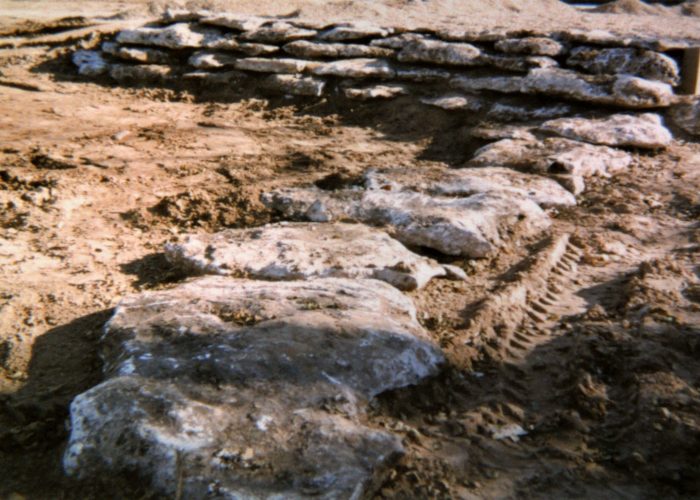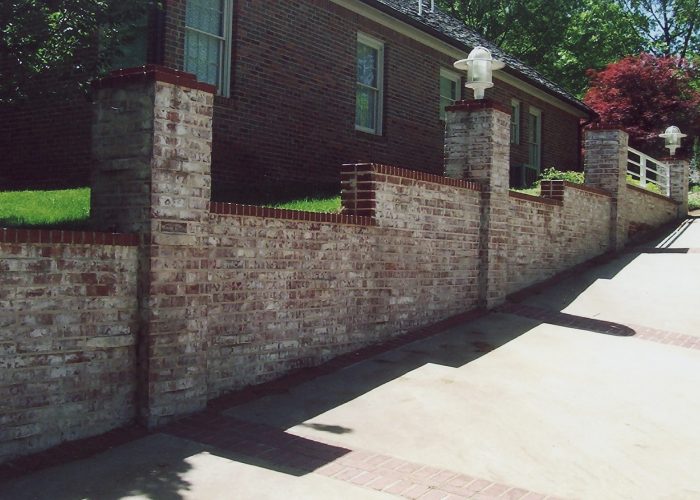Retaining Walls
Retain Your Landscape Soil
Retaining walls can solve the uneven topography of your yard while giving definition to your landscape. When constructing a retaining wall it is crucial to build the wall correctly for it retains tons of soil, therefore, extra reinforcements and precautions are taken. Virtually all retaining walls will need proper drainage with the correct type of pipe and material surrounding it. Depending on the size of the wall an exit for the water called a daylight will need to be installed every so many feet.
Types of Retaining walls
Segmental Retaining Walls
These types of walls are not of one piece but separate units or sections. Each unit is not mortared making this type of wall more flexible. A filter of geotextile fabric is needed behind the wall along with angler drainage rock. This fabric and rock help to retain the soil from coming through the joints of the units but allow water to move freely through the face decreasing the hydrostatic pressure. The footing consists of a hard pack material called crusher run or a concrete footing. If the height of this type of interlocking retaining wall is higher than 4 feet other engineering aspects or designs is needed such as compacted reinforced soil with none degradable grid. The height of these walls can reach 50ft.
United Retaining Walls
A retaining wall with masonry units mortared together typically is the nonsegmental type of retaining wall. This type retaining wall requires a concrete footing that sets below the frost line. A drainage system is needed to dissipate the water to decrease the hydrostatic pressure. Usually, concrete blocks are installed for the backup wall and the material of choice is for the face of the wall. The block can be waterproofed to help decrease the deterioration from thaw and freeze cycles.



